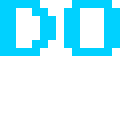As Senior Game Designer, I focused on redesigning the movement system for this VR infinite runner. My vision was to have the ability to chain different moves together, wall grind to running to jumping to rail hanging to ground pound, all with very simple and intuitive controls that make it easy for the player to perform whatever action they think of in VR space.
I also designed a random generation system for track obstacles, and a touch node system with a parkour feel.
Tools
- Unreal Engine 4
- Blueprint
Roles
- System Design
- System Scripting
- Movement and Control Script
- Random Sequence Generator
Assets Acquired
- VR Plugin (Steam VR)
- Textures / Models
*This is a work in active development, so I’m making the demo by request only.
About the Project
I was hired as the Senior Game Designer for this project. It had already been released in early access (Steam Page), but the developers were looking for new ideas. I pitched them my vision for the game and I got to work at prototyping the new systems. Content is being shared with permission of disclosure.
Dev Diary
Fixing a Good Thing
The game was fun as is, but I felt that it lacked variety. The game was limited to carrot and stick: dodging obstacles and picking up coins. The obstacles varied between worlds, but I didn’t feel like the player’s mobility was empowered enough. VR can give the player unique abilities that feel natural, but exaggeratedly capable. I wanted to bring out the free-running aspect of this infinite runner, and draw in more parkour elements that could chain sequences together.
The first thing I focused on was cleaning up the controls. It’s important to me to make sure the controls are as analogue as possible rather than digital button presses. Analogue movements make the player influence their momentum and movement in a more natural way. It’s also easier for the brain to process and anticipate its influence on the player’s trajectory.
Jumping, sprinting, and strafing all have analogue movement elements. I felt it was ok to leave “Braking” as a digital input because it gives the sensation of locking up to stop.
At this point I felt I had a good base. I could run and jump off walls, land fairly accurately, and make minor trajectory adjustments quickly and intuitively to navigate obstacles.
VR Arcade Parkour
Now that I had a basis of free movement, I wanted to try an idea that was more of an obstacle course in concept, and could facilitate the feeling of running a parkour sequence while still an arcade feel. Many popular rhythm games in the VR space have the player standing still interacting with nodes that move towards them (Beat Saber, Audio Shield, Supernatural), so I felt that this kind of interaction system would be easily accessible for VR gamers. Whether the player is standing still and the nodes are moving past the player, or the player is moving past the node, the player’s spacial relativity is doing the same thing. I imagined the player pushing against nodes on the wall to push off it, hanging from monkey bars, ground pounding, ducking under obstacles, spinning around poles, etc. I wanted it to feel right though, so I had to do some research.
Research - Parkour Gym
I attended a class at a parkour gym in Brooklyn with Spyder, one of the mo-cap actors from the Uncharted series, to learn more about free running. After interviewing the instructor, taking the class, and shooting some reference footage, I started working on gestures a player could make that simulated the feeling of the parkour moves. For example, a Kong vault is setup by lowering the center of gravity, then popping up and over the vault. In creating a node system, I placed a low clearance obstacle to make the player drop their center of gravity before having them do the vault movement. The prototype was very successful, though there is still much to change and polish before it’s ready to be implemented.
